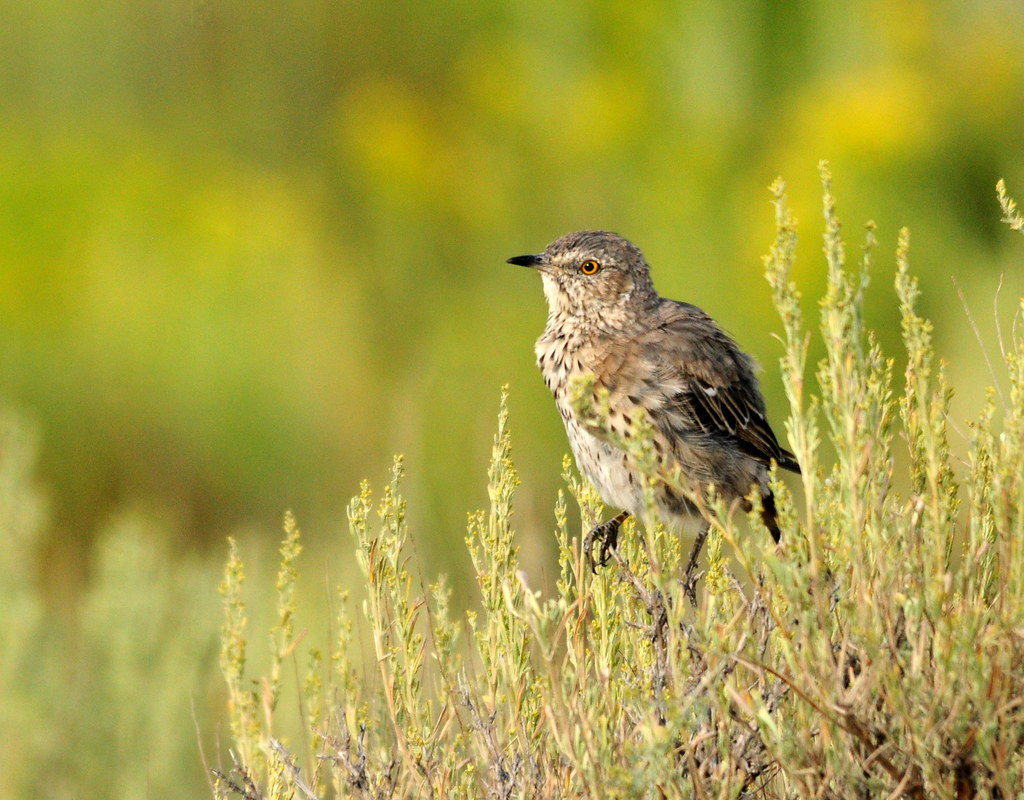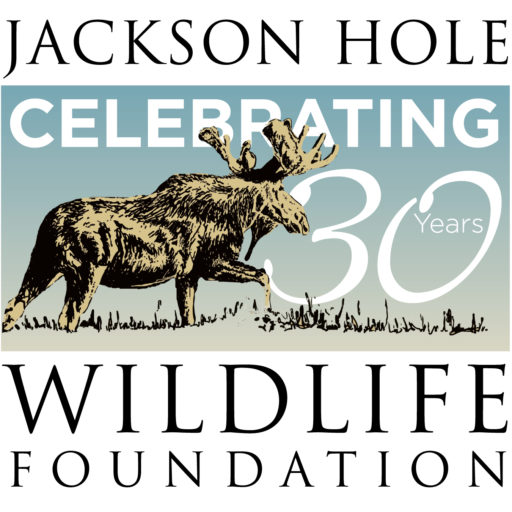As the sun warms in mid-May, the aroma of sagebrush fills the valley once again. Sage-grouse leks are quieting down, bird migrants are staking out territories, and resident mammals are shifting their habitats. Nature mappers can see and hear a good number of species specialized to the sagebrush-steppe by taking a drive through the “flats” of Grand Teton National Park.

The song of the Sage Thrasher is impressively varied and melodic. Listen for them in the sagebrush flats of Grand Teton National Park.
Many species depend upon the expansive sage-dominated habitat that covers much of the valley floor. Mountain Sagebrush is adapted to the well-drained glacial soils and provides shelter, food, and breeding sites. Greater Sage-grouse, Brewer’s Sparrow, and pronghorn require sagebrush and are deemed “obligates”. For others it is not essential but preferred habitat here in Jackson Hole. Savannah and Vesper Sparrows, Western Meadowlarks, Sage Thrashers, and Green-tailed Towhees build nests in the dense shrubs and search for insects and spiders for food. Red-tailed Hawks and Northern Harriers hunt for rodents, such as least chipmunks, Uinta ground squirrels, and voles. Hummingbirds zoom in to pollinate larkspurs and scarlet gilia.
The next few weeks is a great time to see and nature map wildlife. Songbirds are singing atop sagebrush to establish territories and attract mates. You may see males fly at intruders or observe courtship behaviors – bowing, feeding, and fluttering. Later on, most birds go quiet while raising chicks and so are much harder to find.
Mammals are also active. Pronghorn arrive just about now and soon will be giving birth. Coyotes will be looking for fawns hidden among the sage shrubs, although ground squirrels are much easier to catch. “Red” bison calves will be cavorting, and mule deer are moving about belching out volatiles of their favored forage: sagebrush. The smell of sagebrush leaves comes from terpenoids and coumarins, which serve as chemical defenses. Wildflowers begin blooming in abundance in June – paintbrush, hawksbeards, sulphur buckwheat, lupine, and balsamroot, adding to the splendor of the scene.
So take an early morning or evening drive through the park – around Antelope Flats, up the park road. Or better yet, find a spot to sit quietly with your binoculars and a spotting scope handy. And please, keep on nature mapping. We want to be sure our common sagebrush-steppe species stay common. Your observations help us know how these critters are faring over time.
Thank you!
Frances Clark, Nature Mapping Volunteer


